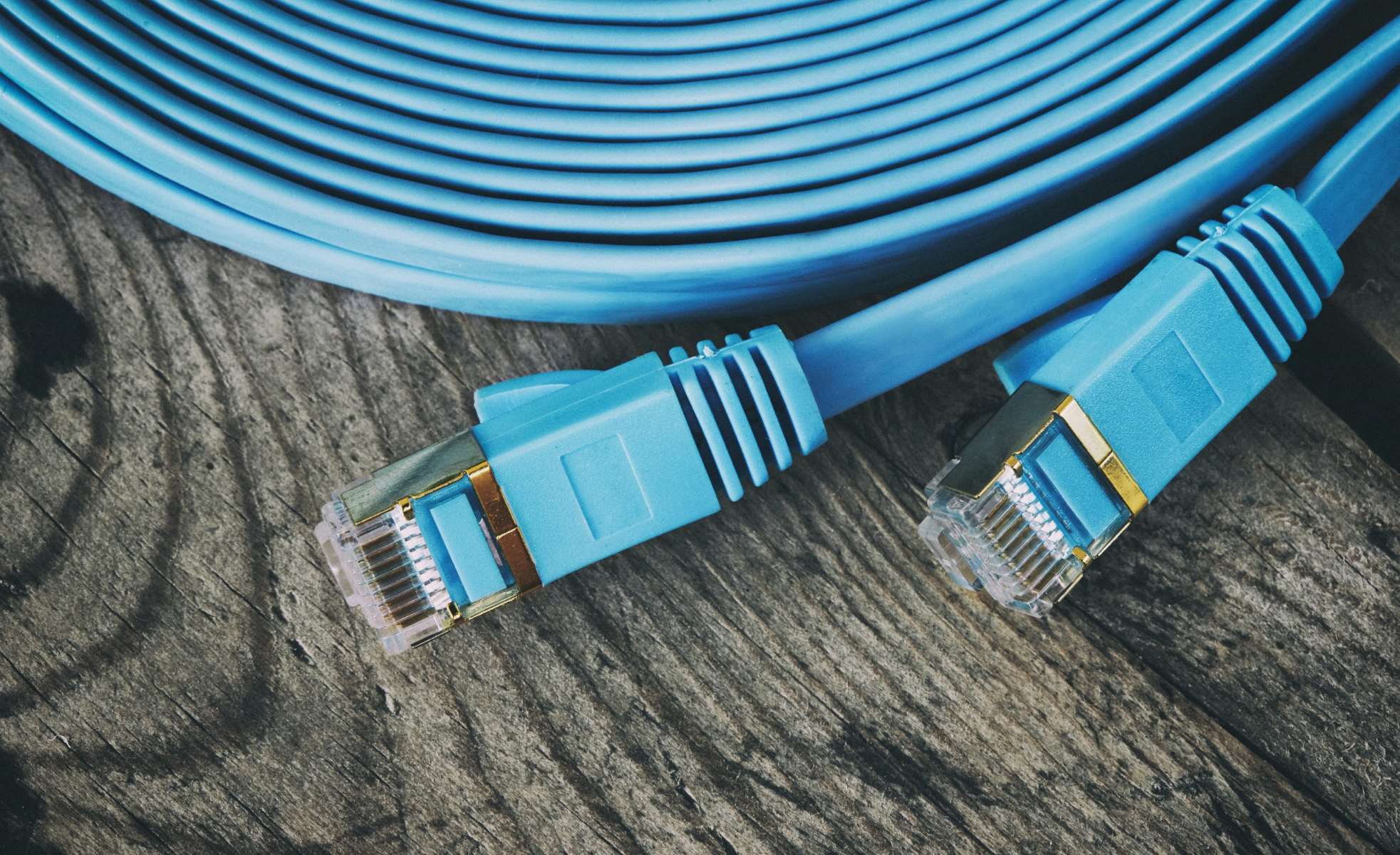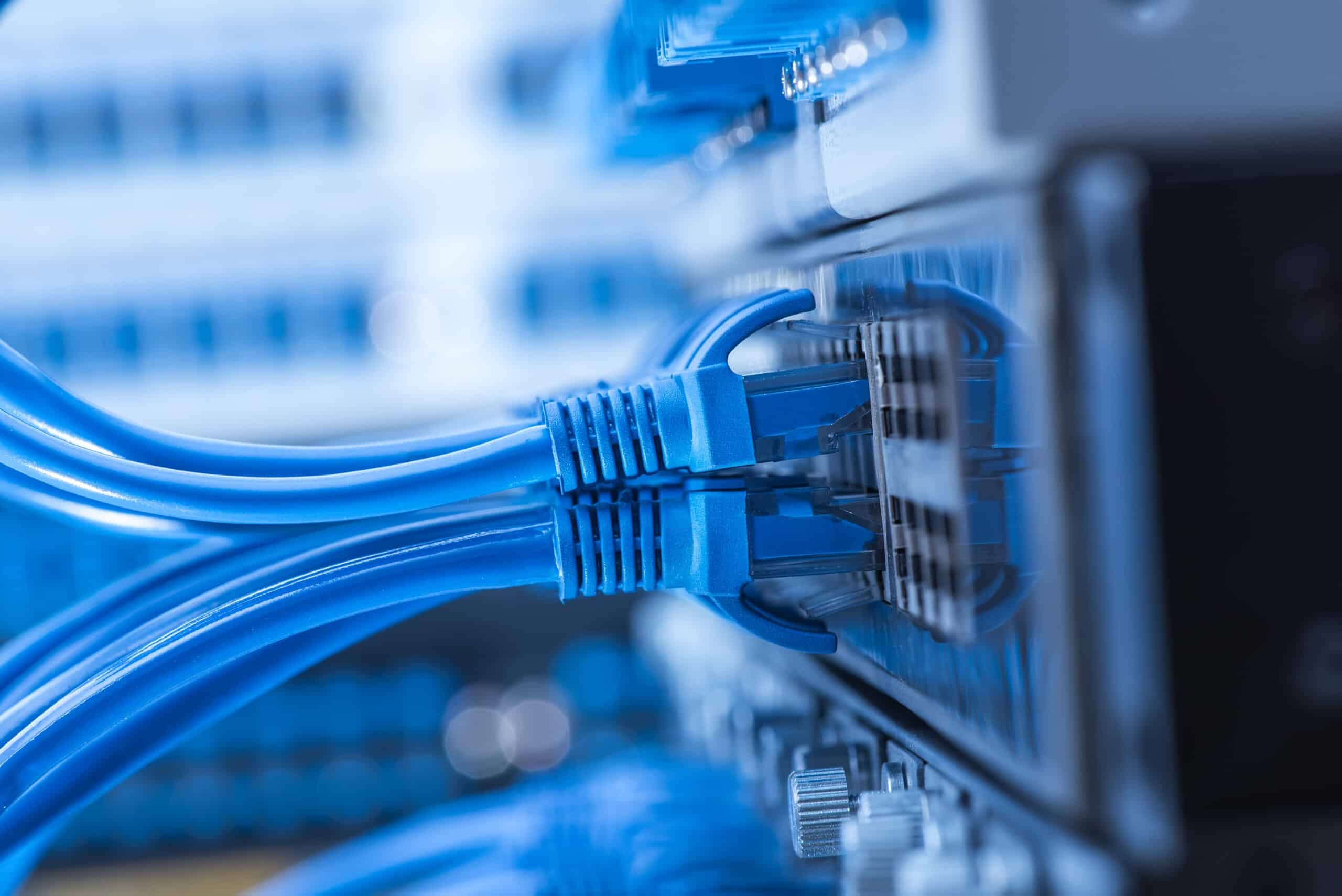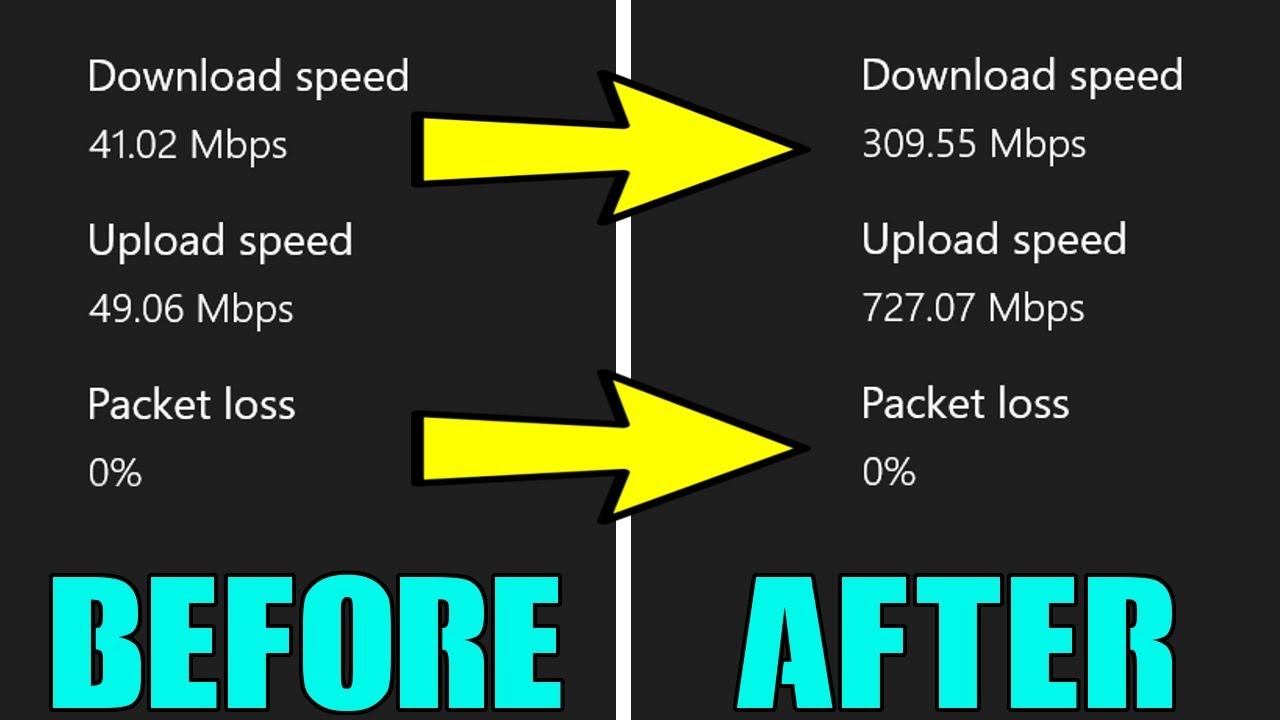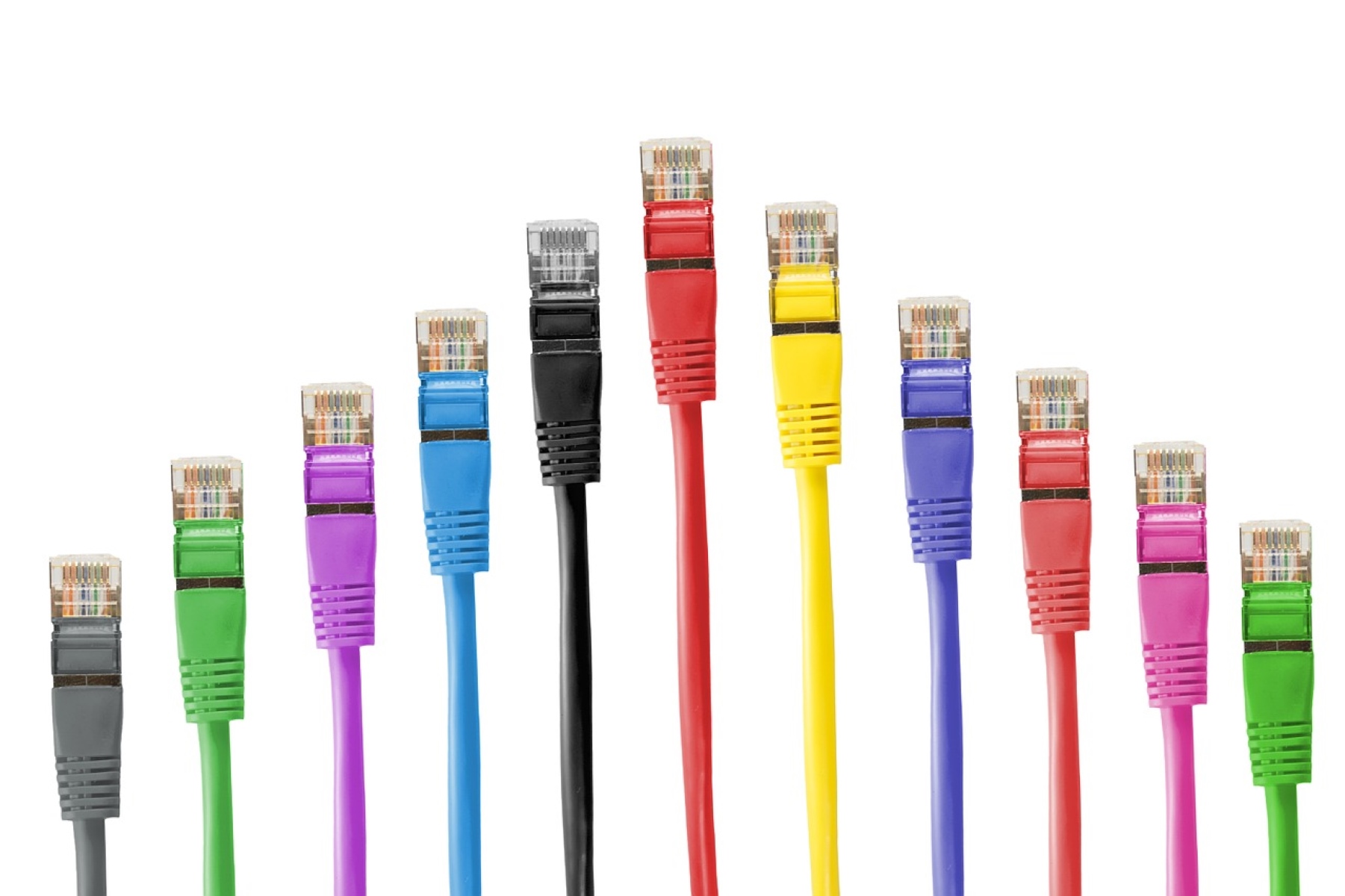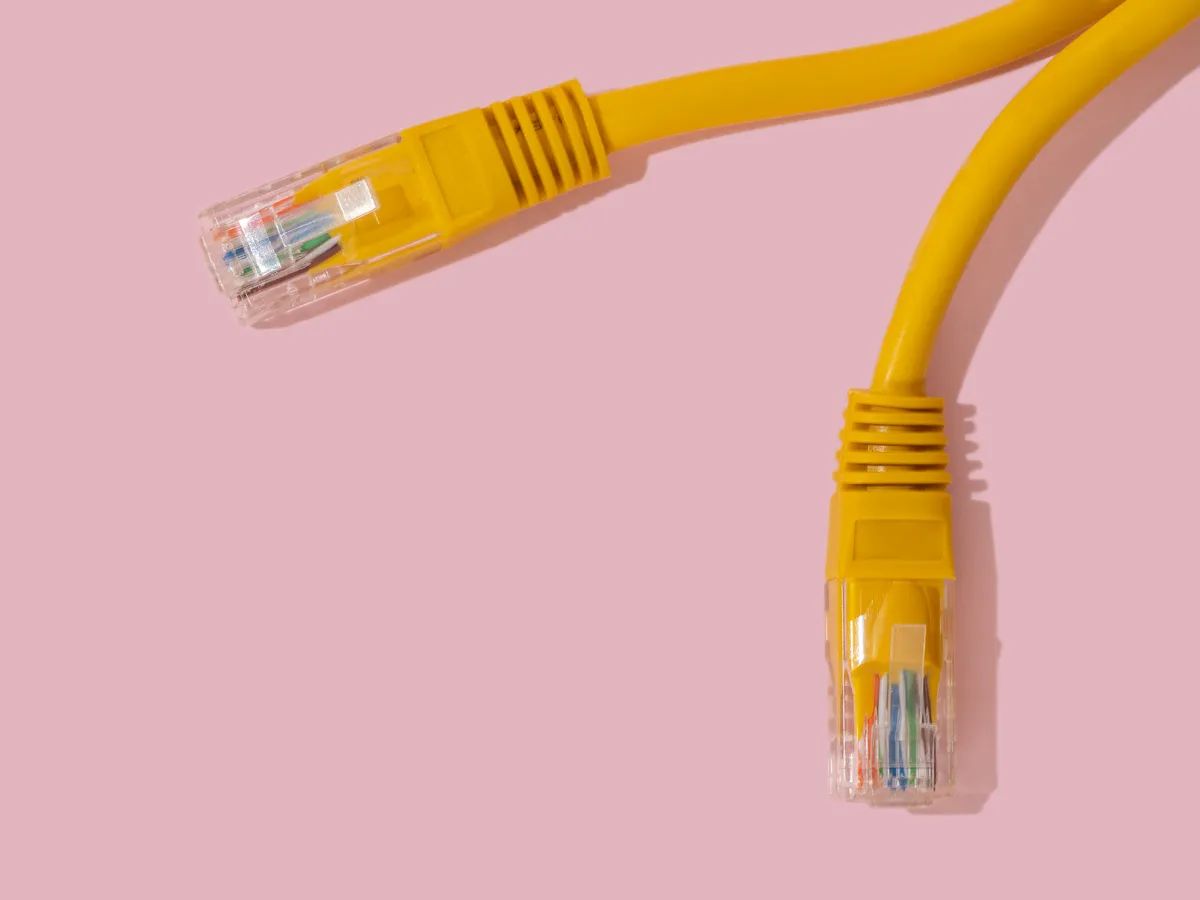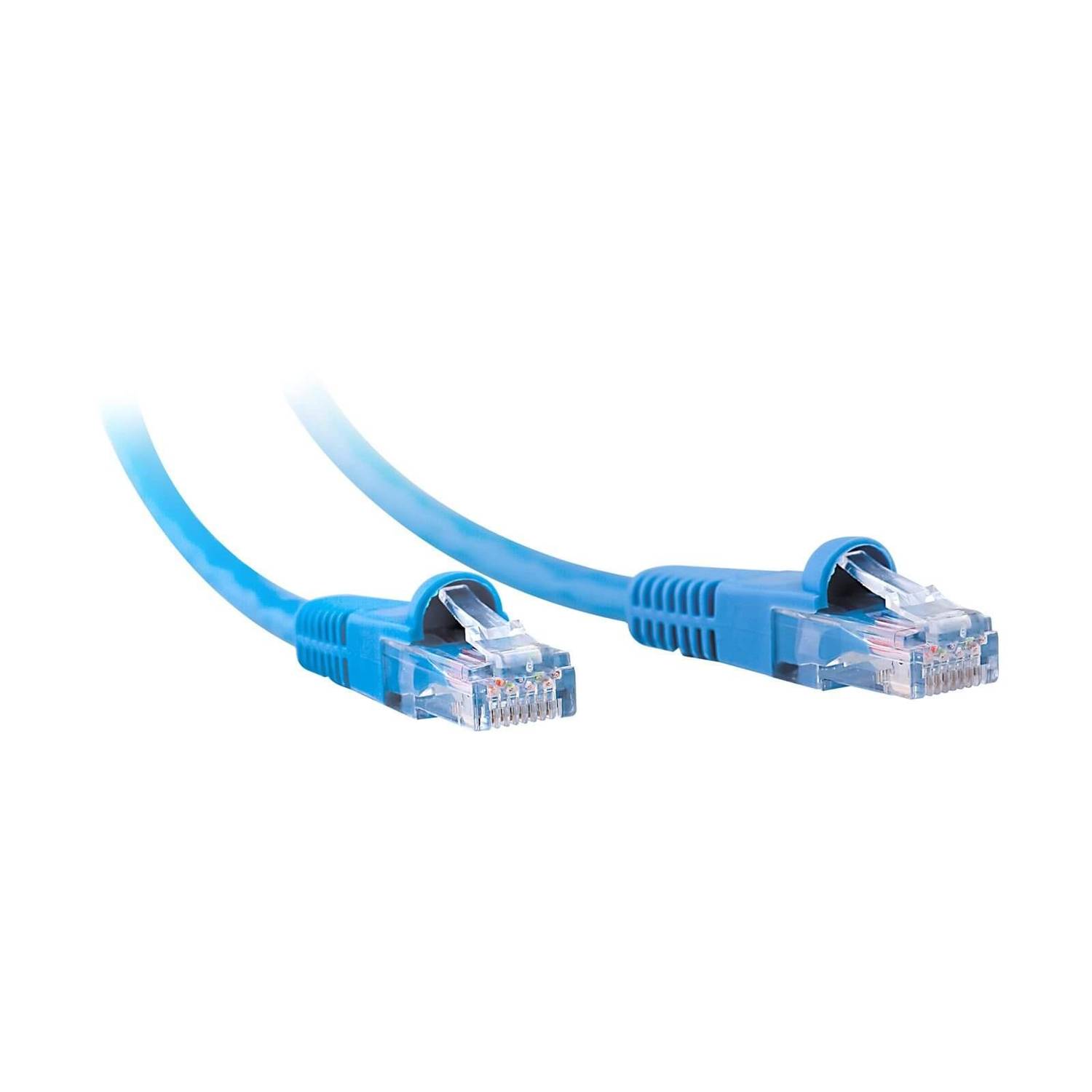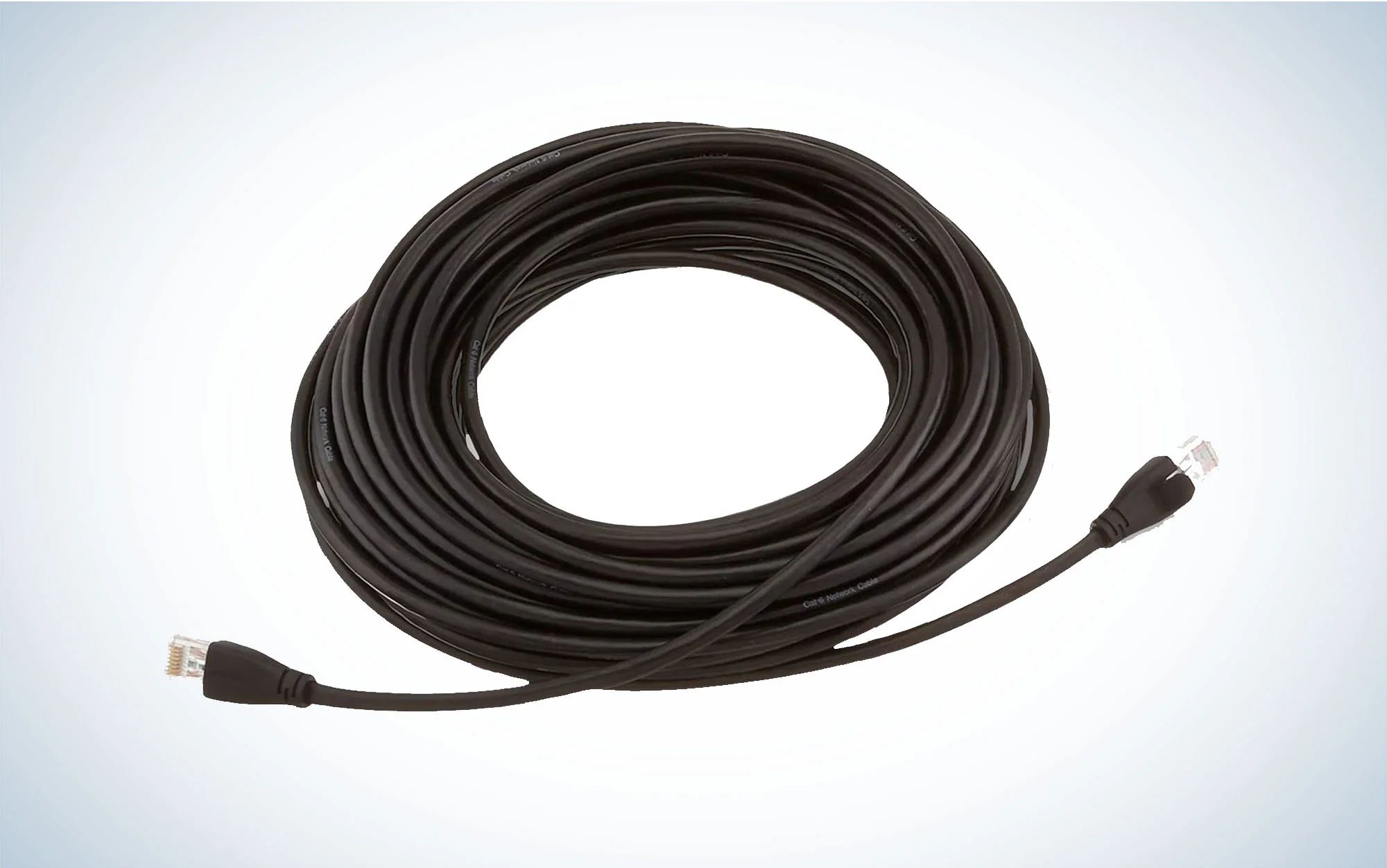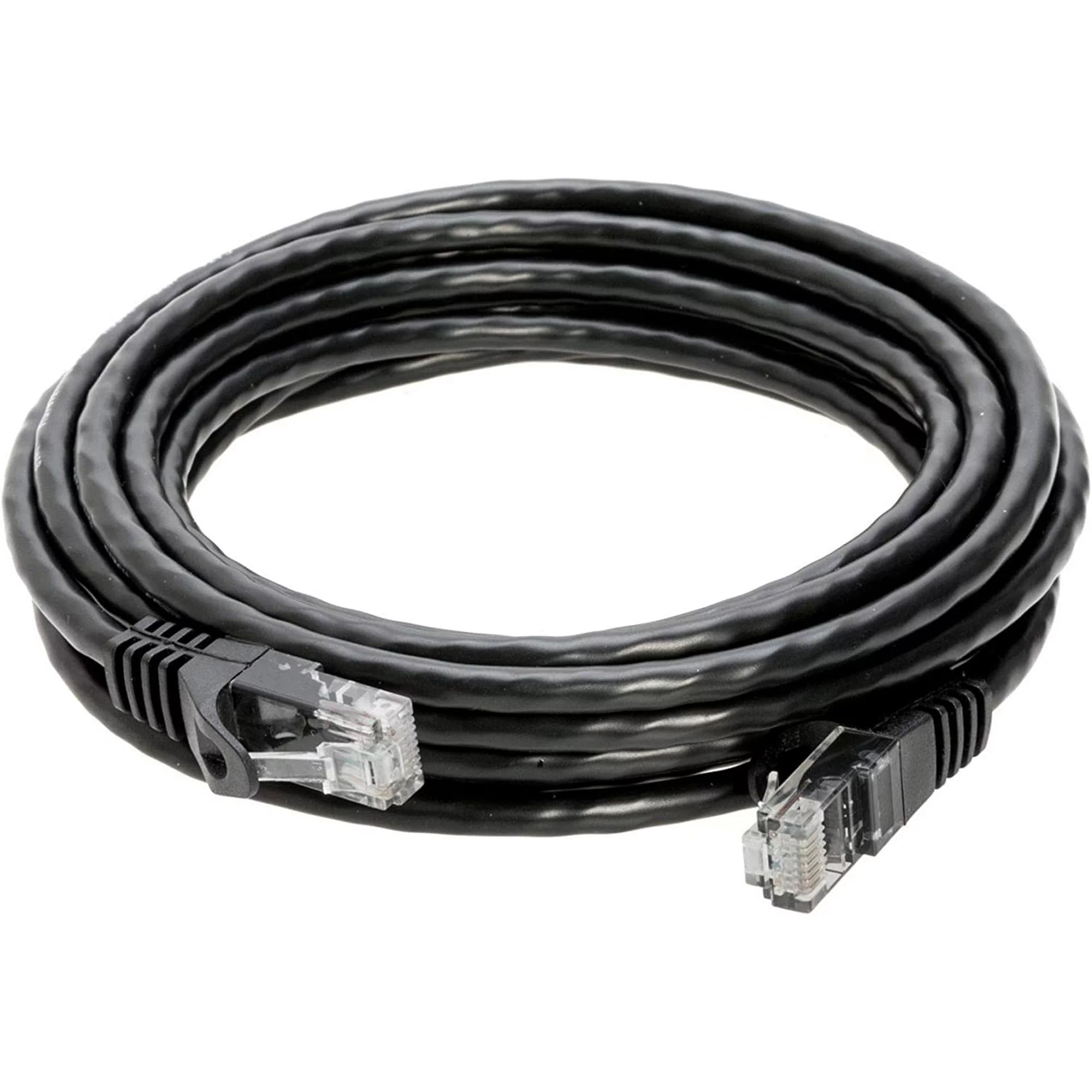Introduction
Welcome to the world of networking, where Ethernet cords play a crucial role in connecting devices and ensuring smooth data transmission. In this digital age, a stable and reliable internet connection is essential, and Ethernet cords are the backbone of these connections. Whether you’re setting up a home network or managing a complex business infrastructure, understanding the importance of Ethernet cords and their pricing can help you make informed decisions when purchasing and installing them.
An Ethernet cord, also known as an Ethernet cable or network cable, is a physical cable that connects devices like computers, routers, and switches to facilitate communication and data transfer. It is commonly used to establish wired internet connections, offering faster and more reliable speeds compared to wireless connections.
As with any product, the price of Ethernet cords can vary significantly based on several factors. The type of Ethernet cable, the category it belongs to, and its length are important considerations that affect the pricing. Additionally, factors such as brand reputation, durability, and warranty may influence the cost.
In this article, we’ll delve into the different types and categories of Ethernet cables, explore the factors that determine their prices, and provide useful tips for choosing the right Ethernet cord for your needs. Whether you’re a networking enthusiast or a business owner looking to enhance your network infrastructure, this guide will equip you with the knowledge to navigate the world of Ethernet cords and make informed purchasing decisions.
The Importance of Ethernet Cords
Ethernet cords are the lifeline of any wired network setup, offering numerous advantages over wireless connectivity. Here are some key reasons why Ethernet cords are essential:
- Reliable and Stable Connection: Ethernet cords provide a stable and reliable connection, minimizing the risk of signal interference and dropouts. This is especially important for activities that demand consistent and uninterrupted internet access, such as online gaming, video streaming, and video conferences.
- Faster Speeds: Ethernet cables are designed to support high-speed data transmission. They can provide faster data transfer rates compared to wireless connections, making them ideal for bandwidth-intensive applications and activities that rely on quick data exchange.
- Lower Latency: Ethernet cords can significantly reduce latency or lag, which is crucial for activities that require real-time interaction, such as online gaming or video conferencing. With lower latency, you can enjoy smoother gameplay, faster response times, and clearer video and audio quality.
- Secure Connection: Wired connections through Ethernet cords offer a more secure option compared to wireless networks, as they are less vulnerable to hacking attempts or unauthorized access. This makes them particularly suitable for business environments where data security is of utmost importance.
- Flexibility and Versatility: Ethernet cords provide flexibility in terms of network architecture and device connectivity. They allow you to easily connect various devices, including computers, printers, gaming consoles, and smart TVs, to create a reliable network infrastructure within your home, office, or data center.
When it comes to networking, Ethernet cords are the backbone that ensures efficient and effective data transmission. Their reliability, speed, low latency, and security features make them indispensable for both residential and commercial network setups. By utilizing Ethernet cords, you can experience faster and more stable connections, enabling seamless and uninterrupted online experiences.
Factors That Determine Ethernet Cord Prices
When purchasing Ethernet cords, it’s essential to understand the various factors that can influence their prices. Here are the key factors to consider:
- Cable Type: The type of Ethernet cable is a primary factor affecting its price. There are various types available, including Cat5, Cat5e, Cat6, Cat6a, and Cat7. As the technology and capabilities of the cable increase, so does the price. For example, Cat7 cables, known for their high-speed performance and shielding capabilities, tend to be more expensive compared to Cat5 or Cat5e cables.
- Cable Category: Ethernet cables are also classified into different categories based on their performance and specifications. Categories such as Cat5, Cat5e, Cat6, and Cat6a indicate the cable’s ability to transmit data at specific speeds and frequencies. Higher category cables typically have better shielding, less interference, and higher transmission speeds, which can impact their pricing.
- Cable Length: The length of the Ethernet cord is another significant factor affecting its price. Longer cables cost more due to the additional material required for manufacturing. It’s crucial to measure the distance between devices and choose an appropriate length to avoid unnecessary costs.
- Brand and Quality: The brand and quality of the Ethernet cord can also impact its price. Well-known and reputable brands often offer higher quality cables, with better construction, longer durability, and superior performance. While these cables may be more expensive, they can provide better value in terms of reliability and longevity.
- Additional Features: Some Ethernet cords come with additional features or enhancements, such as gold-plated connectors, snagless design, or extra shielding. These additional features can affect the price of the cable.
It’s important to consider these factors when pricing Ethernet cords to ensure you choose the right cable that meets your specific needs and budget. While it can be tempting to opt for the cheapest option available, investing in higher quality cables and newer technologies can provide better long-term performance and reliability for your network.
Different Types and Categories of Ethernet Cables
Ethernet cables come in different types and categories, each designed for specific network requirements and performance levels. Understanding the differences between them can help you choose the right cable for your networking needs. Here are the main types and categories of Ethernet cables:
- Cat5: Cat5 cables were the standard Ethernet cables used in the past. They support data transfer speeds of up to 100 Mbps (megabits per second) and are suitable for basic internet browsing and light file sharing. However, Cat5 cables are not recommended for high-speed applications as they cannot handle the bandwidth demands of modern networks.
- Cat5e: Cat5e cables, also known as Cat5 Enhanced, offer improved performance compared to Cat5 cables. They can support data transfer speeds up to 1 Gbps (gigabit per second) and are suitable for most home and small business networks. Cat5e cables are backward compatible with Cat5 cables and provide better resistance to crosstalk, reducing signal interference.
- Cat6: Cat6 cables are designed for more demanding network setups. They can support data transfer speeds of up to 10 Gbps and have better shielding to reduce signal noise and interference. Cat6 cables are recommended for applications that require higher bandwidth, such as video streaming, online gaming, and large file transfers.
- Cat6a: Cat6a cables, or Cat6 Augmented, offer enhanced performance compared to Cat6 cables. They can support data transfer speeds of up to 10 Gbps over longer distances without signal degradation. Cat6a cables are often used in commercial and industrial environments where higher data transmission rates are required.
- Cat7: Cat7 cables are the latest and most advanced Ethernet cables currently available. They can support data transfer speeds of up to 10 Gbps or even 40 Gbps in certain applications. Cat7 cables are shielded and provide superior performance in terms of reduced crosstalk and interference. They are ideal for high-performance networks, data centers, and server rooms.
It’s important to consider the cable type and category based on your specific networking requirements. For basic internet browsing and light file sharing, Cat5e cables may suffice. However, if you require higher data transmission rates and better performance for activities such as gaming or media streaming, Cat6 or Cat6a cables would be a more suitable choice. For professional setups or applications demanding the highest speeds and performance, Cat7 cables offer the best option.
When selecting an Ethernet cable, it’s crucial to ensure compatibility with your devices and networking equipment. It’s also worth noting that higher category cables can support lower category requirements, providing flexibility for future upgrades or network expansions.
The Cost of Ethernet Cords: A Breakdown
The cost of Ethernet cords can vary based on several factors, including the type, category, length, and quality of the cable. Let’s break down the different cost considerations when purchasing Ethernet cords:
- Cable Type: The type of Ethernet cable you choose will impact its price. Cat5e cables, being the most commonly used and widely available, tend to be the most affordable option. As you move up to higher categories like Cat6, Cat6a, and Cat7, the price increases due to their enhanced performance and capabilities.
- Cable Category: Within each cable type, there are different categories that offer varying performance levels and speeds. As the category increases, so does the price. For instance, Cat5e cables are typically more affordable compared to Cat7 cables due to the latter’s superior capabilities.
- Cable Length: The length of the Ethernet cord is another crucial factor affecting its cost. Longer cables require more material and are therefore priced higher than shorter cables. It’s important to measure the distance between your networking devices and choose an appropriate cable length to avoid unnecessary expenses.
- Brand and Quality: Ethernet cords from well-known brands with a reputation for high-quality products often come at a higher price point. While these cables may be more expensive, they often offer superior construction, durability, and performance. Investing in a reputable brand can ensure long-term reliability and minimize the need for frequent replacements.
- Additional Features: Certain Ethernet cords come with added features such as gold-plated connectors, snagless design, or extra shielding. These features can contribute to a higher price, but they may also provide benefits like improved connectivity, easier installation, and better protection against interference.
It’s important to balance your budget with your networking needs when considering the cost of Ethernet cords. While it can be tempting to opt for the cheapest option available, compromising on quality or performance may lead to issues such as poor connectivity, slower speeds, or frequent cable replacements.
Keep in mind that Ethernet cords are a long-term investment, and choosing higher quality and higher performance cables may provide better value in the long run. By understanding the pricing factors and evaluating your specific requirements, you can find the right balance between cost and performance in your Ethernet cord purchase.
Where and How to Buy Ethernet Cords
When it comes to purchasing Ethernet cords, there are several options available to consider. Here are some common places to buy Ethernet cords and tips on how to make your purchase:
- Online Retailers: Online marketplaces such as Amazon, Newegg, and Best Buy offer a wide selection of Ethernet cords in different types and lengths. These platforms provide user reviews, product descriptions, and convenient search filters to help you find the right cable for your needs. Online retailers often offer competitive pricing and the convenience of doorstep delivery.
- Specialty Networking Stores: Specialty stores that focus on networking equipment, such as computer hardware stores or electronics retailers, are excellent places to find Ethernet cords. These stores typically have knowledgeable staff who can guide you in selecting the right cable based on your requirements and budget.
- Office Supply Stores: Office supply stores like Staples and Office Depot often carry Ethernet cords, particularly in shorter lengths suitable for home or small office setups. These stores may also provide additional networking equipment and accessories that complement your Ethernet cord purchase.
- Local Computer Stores: Local computer stores or repair shops may have Ethernet cords available for purchase. Visiting these stores allows you to ask questions, receive advice, and physically inspect the cables before making a purchase.
- Online Auctions and Classifieds: Online platforms such as eBay or local classified ads can be an option to explore if you’re looking for both new and used Ethernet cords. However, exercise caution when buying from these sources and ensure that the seller has a good reputation and provides accurate product descriptions.
When buying Ethernet cords, keep the following tips in mind:
- Consider the length: Measure the distance between your devices and choose an appropriate cable length to avoid unnecessary costs or cable management issues.
- Check compatibility: Ensure that the Ethernet cords you purchase are compatible with your devices, such as computers, routers, or gaming consoles.
- Compare prices and reviews: Take the time to compare prices and read customer reviews to make an informed decision. Look for cables that have positive reviews regarding reliability, durability, and performance.
- Consider future needs: If you anticipate future upgrades or expansions, consider purchasing Ethernet cords with higher performance capabilities to future-proof your network.
- Check warranty and return policies: Before purchasing, review the warranty and return policies of the retailer or manufacturer to ensure you have recourse in case of any issues.
By exploring different buying options and following these tips, you can find the right Ethernet cord that meets your needs in terms of performance, quality, and affordability.
Tips for Choosing the Right Ethernet Cord
Choosing the right Ethernet cord is crucial for establishing a reliable and efficient network connection. Here are some tips to help you make an informed decision:
- Identify your needs: Determine the specific requirements of your network setup. Consider factors such as the desired data transfer speed, the distance between devices, and the network environment. This will help you select the appropriate cable type and category.
- Consider the cable category: Select a cable category that meets or exceeds your speed requirements. Higher category cables such as Cat6 or Cat6a are recommended for applications that demand faster speeds or require future-proofing.
- Choose the right cable length: Measure the distance between devices and choose a cable length that allows for flexibility and proper cable management. It’s better to have a slightly longer cable than a short one that limits your setup options.
- Consider the environment: If you’re setting up a network in a harsh environment or an area prone to electrical interference, consider Ethernet cables with additional shielding or robust construction to ensure reliable performance.
- Check for compatibility: Ensure that the Ethernet cord is compatible with your devices, including computers, routers, switches, and other networking equipment. Different devices may have specific requirements or support certain cable categories.
- Invest in quality: Opt for Ethernet cords from reputable brands known for their quality and reliability. While they may come at a slightly higher price, they often offer better construction, durability, and performance, providing a more dependable and long-lasting solution.
- Read reviews: Research and read customer reviews to gauge the performance and reliability of the Ethernet cord you are considering. Real-world feedback can give you insights into factors like signal strength, durability, and compatibility.
- Consider future scalability: If you anticipate expanding your network in the future or upgrading your devices, consider choosing Ethernet cords with higher performance capabilities to accommodate the growing demands of your network.
- Check warranty: Review the warranty offered by the manufacturer or retailer. A good warranty can provide peace of mind and ensure that you have support in case of any defects or issues with the cable.
- Balance cost and quality: While price is an important factor, don’t compromise on quality and performance for the sake of saving a few dollars. Strive to find the right balance between cost and quality to ensure a reliable and long-lasting network connection.
By considering these tips and focusing on your specific network requirements, you can make an informed decision and choose the right Ethernet cord that best suits your needs, providing a stable and efficient network connection for your home or business.
Conclusion
Ethernet cords are essential components of wired network setups, providing reliable and stable connections for homes, offices, and data centers. Understanding the importance of Ethernet cords, factors that determine their prices, different types and categories available, and tips for choosing the right cable can empower you to make informed purchasing decisions.
Ethernet cords offer advantages such as faster speeds, lower latency, secure connections, and flexibility in network architecture. By investing in high-quality Ethernet cords, you can experience smoother online experiences, improved gaming performance, and seamless file transfers.
When buying Ethernet cords, consider factors like cable type, category, length, and quality. Compare prices, read reviews, and explore different buying options such as online retailers, specialty networking stores, and local computer shops. Look for cables that meet your specific needs in terms of speed, compatibility, and future scalability.
Remember to strike a balance between cost and quality. While budget-friendly options may be tempting, investing in reliable brands and higher category cables can provide better long-term performance and durability.
By following these guidelines, you can select the right Ethernet cord that suits your networking requirements, ensuring a stable and efficient connection for your devices. With a reliable network infrastructure in place, you can enjoy seamless internet browsing, smooth media streaming, uninterrupted gaming, and efficient data transfers.
Take the time to research, evaluate your needs, and make an informed decision. Whether you’re setting up a basic home network or managing a complex business infrastructure, choosing the right Ethernet cord is a crucial step towards building a reliable and high-performing network.







